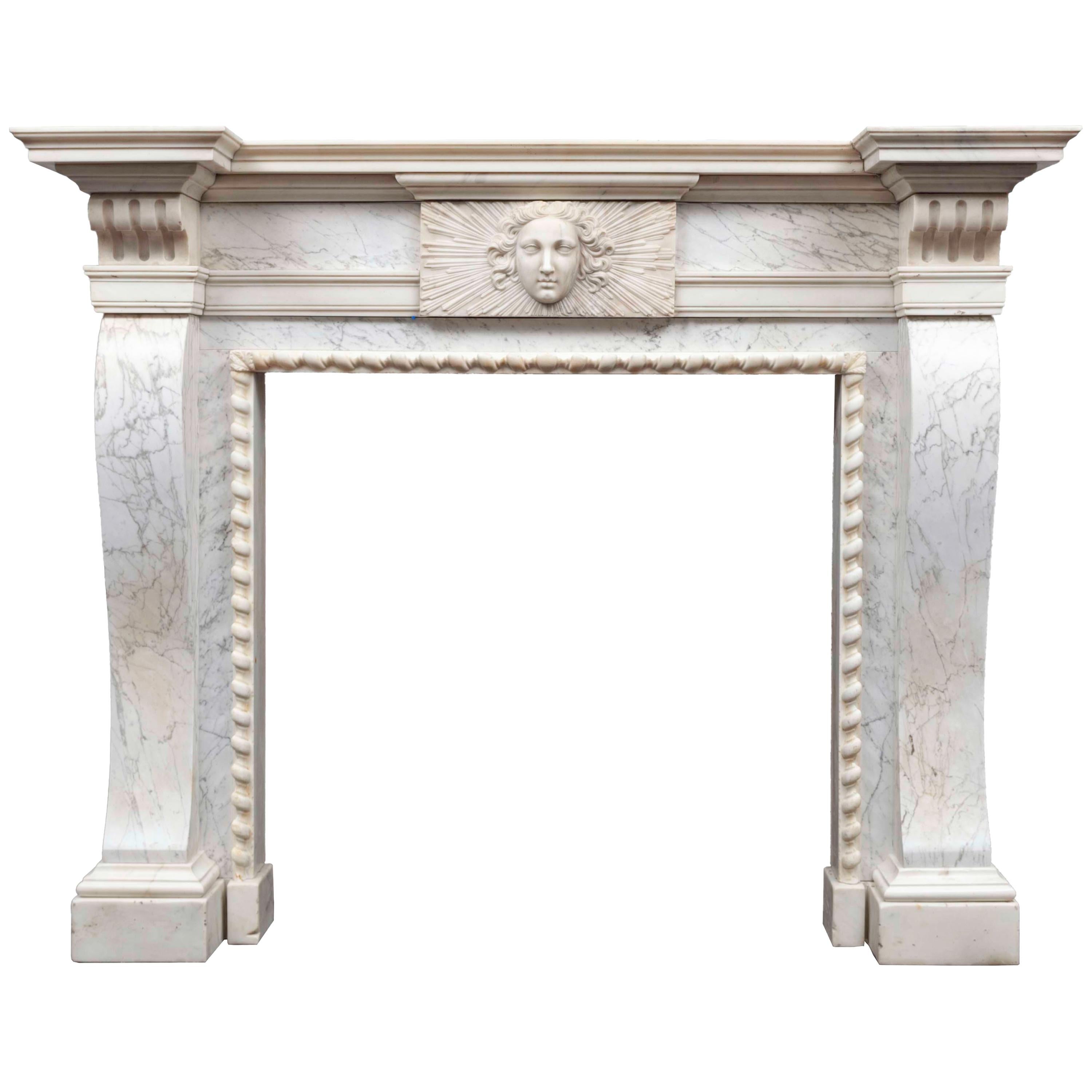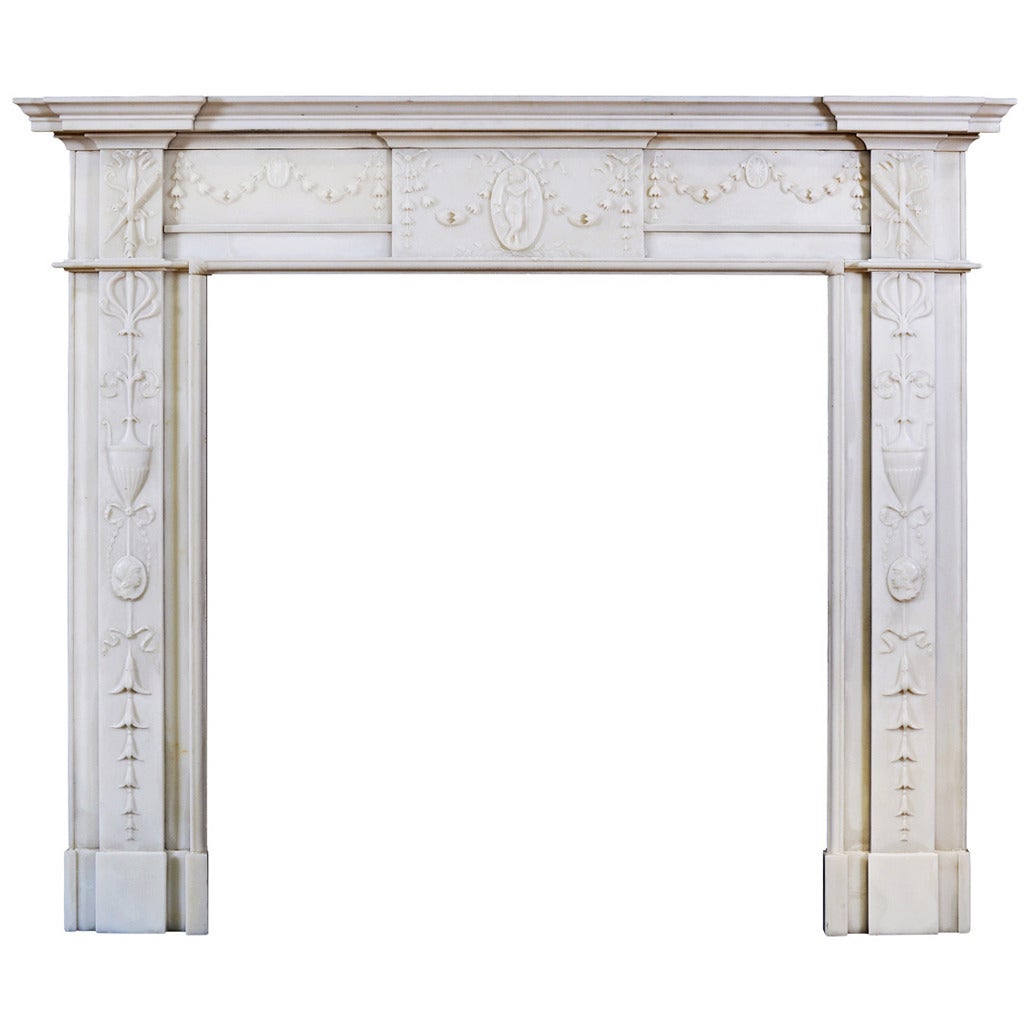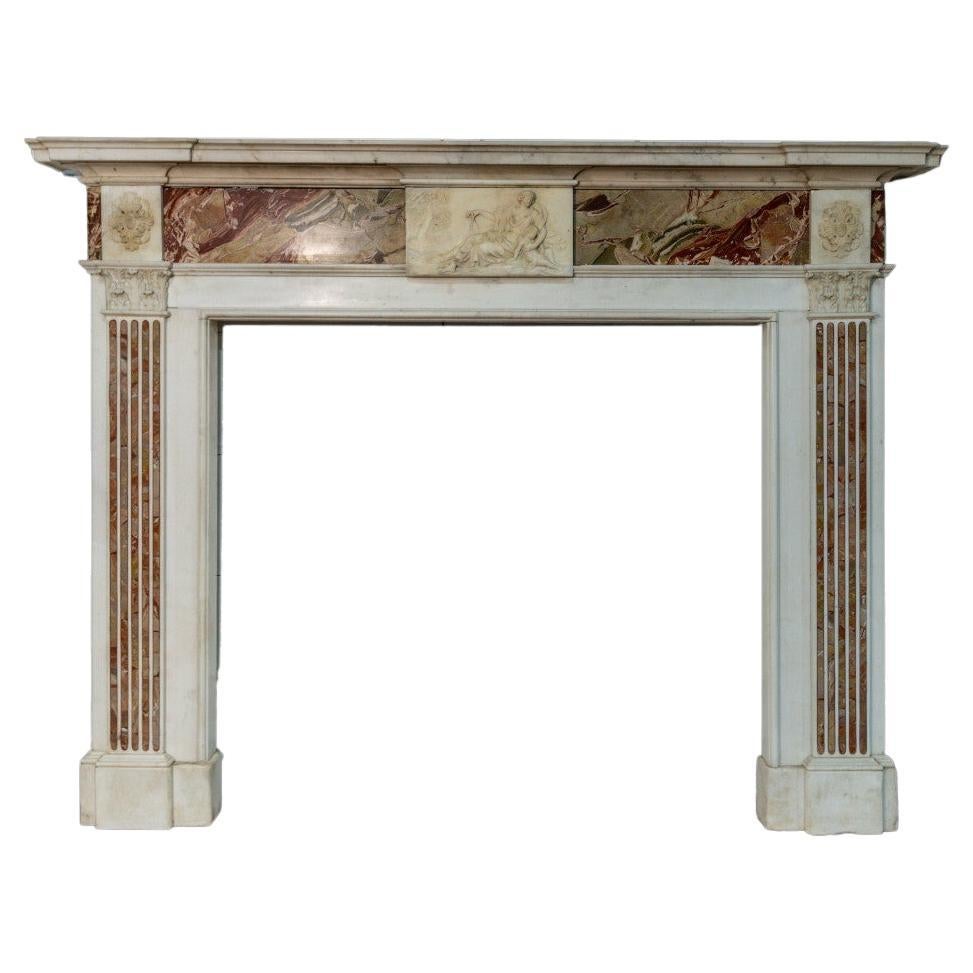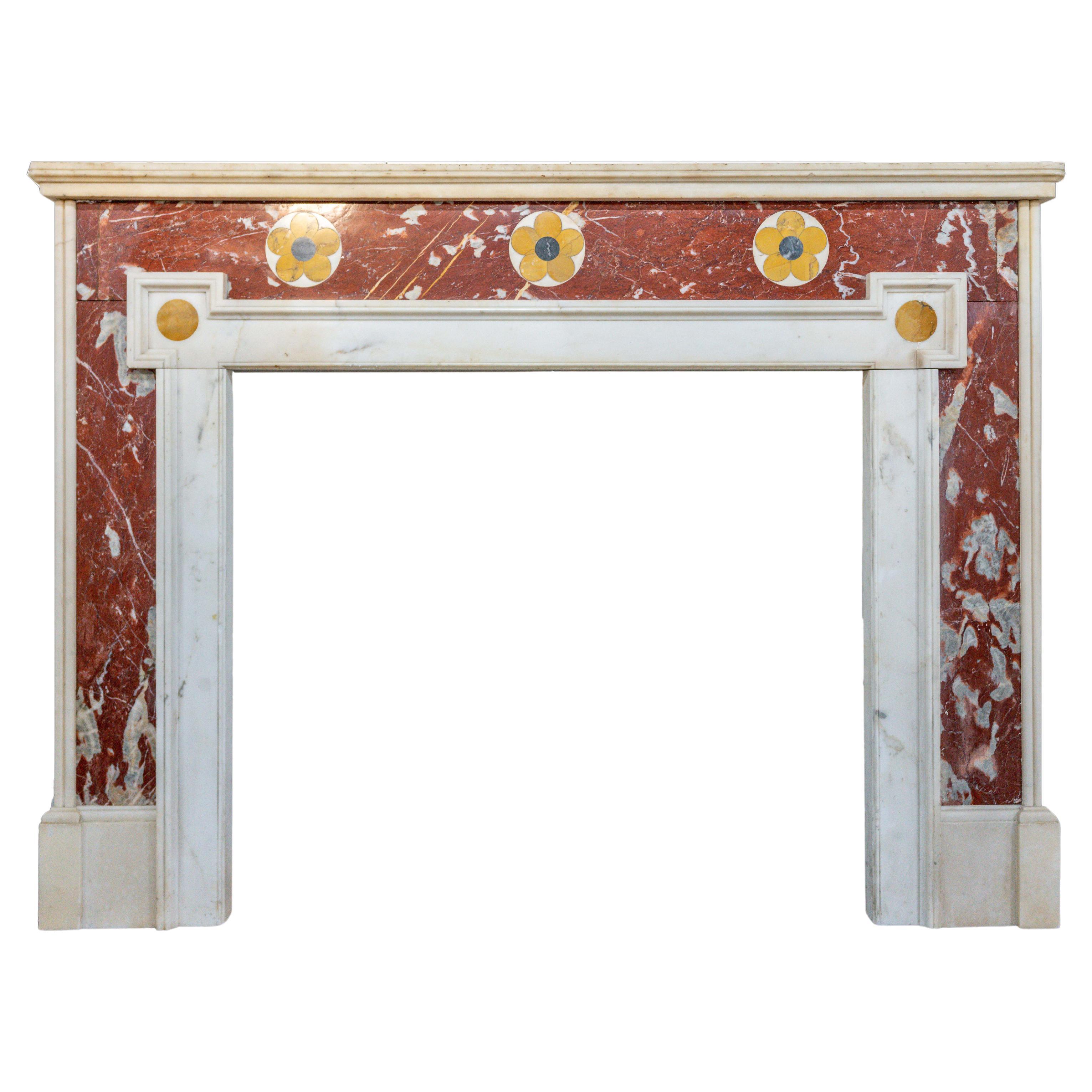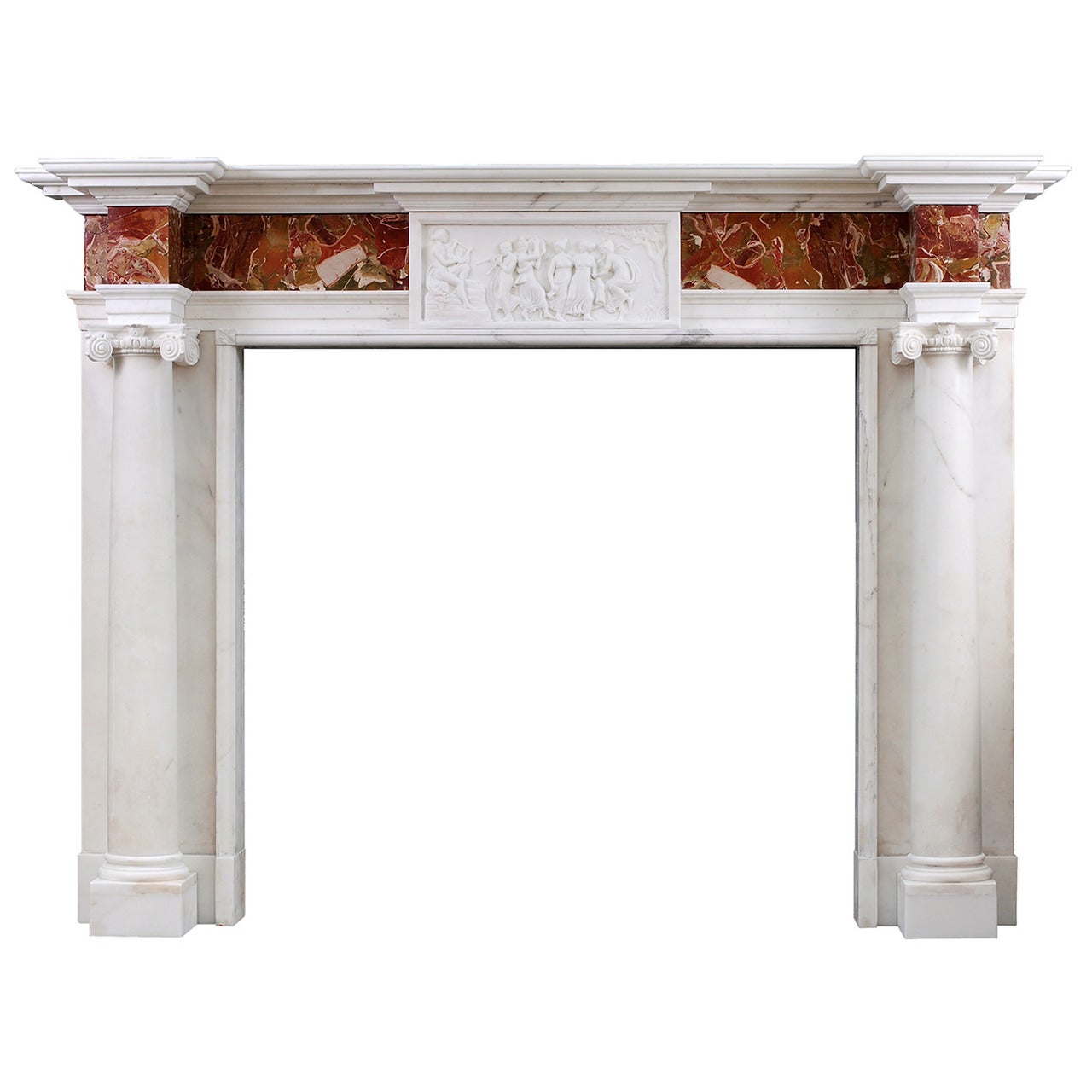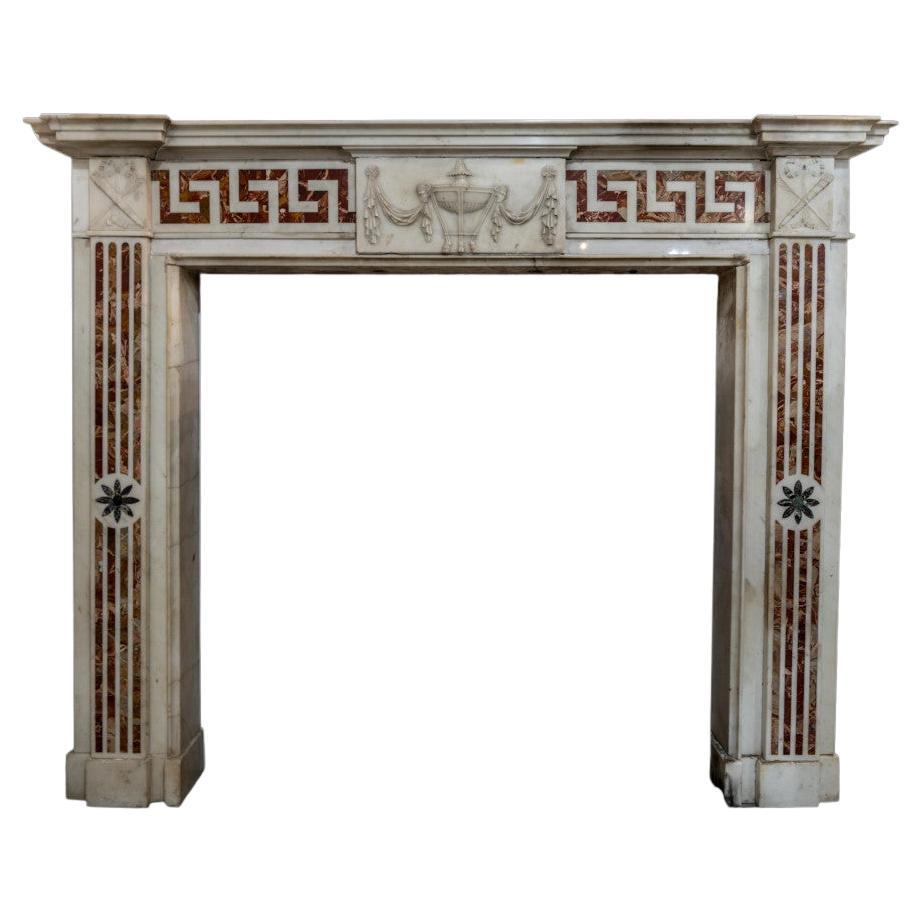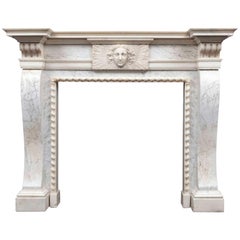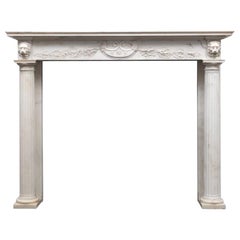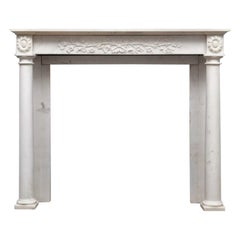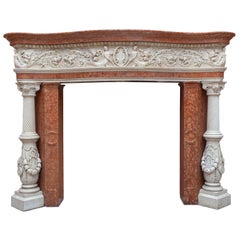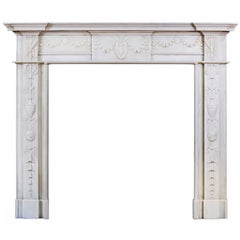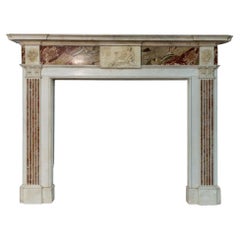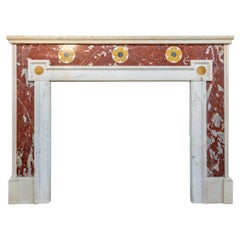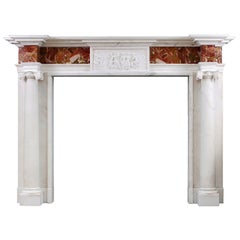Items Similar to 18th Century Marble Mantelpiece Designed by Isaac Ware for Chesterfield House
Want more images or videos?
Request additional images or videos from the seller
1 of 12
18th Century Marble Mantelpiece Designed by Isaac Ware for Chesterfield House
$494,712.02
£360,000
€425,260.89
CA$686,402.54
A$769,048.15
CHF 399,938.56
MX$9,317,596.23
NOK 5,095,394.34
SEK 4,756,727.35
DKK 3,174,482.96
About the Item
The frieze having curved panels of verde antico, overlaid with foliate scrolls of statuary marble. The centre plaque which is dog leg in shape depicts Flora, goddess of flowers and the season of spring, flanked by swags of oak leaves and acorns. The full tapering columns of verde antico marble are fluted and capped with finely carved ionic capitals.
This fireplace is considered to be one of the finest and most important 18th century fireplaces to come to the market in recent years. Ryan and Smith have acquired it from the Chrysler Museum of Art, Norfolk, Virginia. Walter P Chrysler Jr., renowned collector of antiques and fine art, purchased the fireplace from the well-known Mayfair antiques dealer Stanley J Pratt Limited, 27 Mount Street, London. Stanley J Pratt removed the chimneypiece from the drawing room of Linton Park Kent after the Owner (Olaf Hambro’s) death in 1961, its featured in a Country life article from April 5th 1946 (see additional images). The chimneypiece is also illustrated in Connoisseur magazine 1963 Vol. 154, no. 620, which states “Originally in the Drawing room of Chesterfield House Mayfair, attributed to Isaac Ware”. The fireplace was most likely installed in the ballroom of Chesterfield (image of ballroom in additional images from country life magazine feature) not the drawing room which had a similar fireplace with Sienna marble and Mercury centre tablet.
Isaac Ware’s is an interesting story. Born into poverty and working as a chimney sweep by the age of 8, he was adopted by Richard, 3rd Earl of Burlington, who reportedly saw his chalk pavement drawings and recognised his talent. Aged 17, whilst still in Burlington’s household, he was apprenticed to Thomas Ripley, architect and surveyor in the Royal Office of Works, and a great favourite of Sir Robert Walpole, for whom he worked at Houghton Hall. Under the aegis of Burlington he became a devotee of Palladianism, publishing ‘Designs of Inigo Jones and Others’ (1731 and 1743) and a scholarly translation of Palladio’s ‘Four books of Architecture’ (1738) which he dedicated to Burlington. His most important work however was ‘A Complete Body of Architecture’ published in 1756-1757, which became a standard work on Georgian architectural practice and theory.
This Palladian ‘Ionic’ chimneypiece by Ware derives from a design by Inigo Jones (d. 1652) which was subsequently re-worked by both Isaac Ware and William Kent (d. 1748). Ware’s chimneypiece is featured in L.A.Shuffrey’s book, The English Fireplace, London, 1912, plate CVIII. Although Shuffrey describes the chimney piece in “The Drawing Room at Chesterfield House” as being of Siena marble, H. Avary stated in a Country Life article about the property that “the only one (chimneypiece) of that marble (gallo de sienna) is of the French type”. For despite Ware’s strong Palladian inclination, the 4th Earl was a committed Francophile and this taste was reflected in much of the interior design of the house, though clearly not in the case of the design for this chimneypiece.
Ware illustrated chimneypieces with tablets of related design to that employed in the ornament of the present example in his work, A Complete Body of Architecture, Book I, 1756, (pls 89 & 94) and writes at some length why he favoured this shape for the tablet and considered it so appropriate for chimneypieces ‘of all its parts, the central tablet is the principal: that will attract the eye first, and detain it longest; and consequently upon that it is needful to bestow the greatest attention. With respect to its form, that of an oblong square would first come into the architects thought; but something may properly be added to it… To this purpose, in the present instance, let the tablet drop into the upper member of the frame only in the middle; the two side parts being of the breadth of the freeze. This will give the tablet itself a more handsome shape than that of a plain square, and will suit it very happily to receive the ornament that is most proper for it. This may be of various kinds, but there is none so fit as a head and leave almost necessity of short festoons on the two sides’ (ibid. Book VI, Ch. XXXIV, p. 601). Ware also writes of his preference for the marble utilised in the present example ‘There are some of the old marbles much more fit for the purpose; the true verde antique, will be a glorious addition in this place, its elegant green being altogether unlike the whole; and upon this the ornament well wrought in the same statuary kind will be very elegant’ (ibid. Book VI, Ch. XI, p. 567).
Although there is no record of the sculptors that Isaac Ware instructed to undertake his designs, one distinct possibility is James Richards (d. 1767) appointed Master Sculptor & Carver in Wood, Office of Works to George I after Grinling Gibbons demise. James Richards was Isaac Ware’s father-in-law, and Ware’s son, Walter James Ware, was employed in Richards’ workshop. James Richards is documented as having carved ornaments on chimneypieces at Kensington Palace and was employed by William Kent to execute carved stonework for the Horse Guards and at Lord Pelham’s house at 17 Arlington Street. The overmantel in the King’s Gallery at Kensington Palace is also believed to have been by Richards, again working for Kent (Ed. Geoffrey Beard, Christopher Gilbert, Dictionary of English Furniture Makers 1660-1840, Leeds, 1986, p. 742). Ware’s close family ties to Richards make it highly probable that Ware would have utilised Richards’ workshops for the execution of his designs.
Aside from Chesterfield House, the magnificence of which is revealed by a rendering of its interior featuring twin staircases, Ware was responsible for a number of country houses, including Wrotham Park, Hertfordshire and Clifton Hill House, Bristol.
- Attributed to:Isaac Ware (Designer)
- Dimensions:Height: 71 in (180.34 cm)Width: 99 in (251.46 cm)Depth: 17 in (43.18 cm)
- Style:Palladian (Of the Period)
- Materials and Techniques:
- Place of Origin:
- Period:
- Date of Manufacture:1750
- Condition:Wear consistent with age and use.
- Seller Location:Tyrone, GB
- Reference Number:Seller: 180211stDibs: LU1082223850572
About the Seller
5.0
Vetted Professional Seller
Every seller passes strict standards for authenticity and reliability
Established in 2000
1stDibs seller since 2014
61 sales on 1stDibs
Typical response time: 1 hour
- ShippingRetrieving quote...Shipping from: Tyrone, United Kingdom
- Return Policy
Authenticity Guarantee
In the unlikely event there’s an issue with an item’s authenticity, contact us within 1 year for a full refund. DetailsMoney-Back Guarantee
If your item is not as described, is damaged in transit, or does not arrive, contact us within 7 days for a full refund. Details24-Hour Cancellation
You have a 24-hour grace period in which to reconsider your purchase, with no questions asked.Vetted Professional Sellers
Our world-class sellers must adhere to strict standards for service and quality, maintaining the integrity of our listings.Price-Match Guarantee
If you find that a seller listed the same item for a lower price elsewhere, we’ll match it.Trusted Global Delivery
Our best-in-class carrier network provides specialized shipping options worldwide, including custom delivery.More From This Seller
View AllAntique George II Period Marble Mantelpiece in the Manner of William Kent
By William Kent
Located in Tyrone, Northern Ireland
Made from veined Carrara marble and white statuary marble.
The centre plaque with a well carved mask of Apollo surrounded by a sunburst. The console jambs are under fluted corbels...
Category
Antique Early 18th Century English Palladian Fireplaces and Mantels
Materials
Carrara Marble
An antique Italian Statuary marble mantlepiece (over 200 years old)
Located in Tyrone, Northern Ireland
An antique late 18th/ early 19th century Italian Statuary marble mantlepiece of fine quality
Small in scale and beautifully made in Italy around the year 1800.
The exquisitely carve...
Category
Antique Early 1800s Italian Neoclassical Fireplaces and Mantels
Materials
Statuary Marble
19th Century Italian Statuary Marble Regency Period Fireplace, circa 1820
Located in Tyrone, Northern Ireland
An antique Regency period Italian Statuary marble mantlepiece of fine quality.
Small in scale and beautifully made in Italy during the 1820’s, from the finest statuary marble.
The ...
Category
Antique 19th Century Italian Regency Fireplaces and Mantels
Materials
Statuary Marble
Antique Venetian Renaissance Marble Mantel
Located in Tyrone, Northern Ireland
The serpentine shaped frieze has incredibly fine carvings of fabulous Renaissance ornament. The centre cartouche is upheld by male figures terminating in scrolling acanthus leaf’s, these flanked by dragons amongst foliage and female figures on each of the curved corners.
The frieze upheld by highly carved baluster shaped pedestals on Rosso Verona jambs.
Made from Pietra d’Istria marble and Rosso Verona marble.
Photographed in un-restored original condition, can be cleaned if preferred,
circa 1830
Provenance: Talygarn house in Wales, rebuilt during the 19th century by George Thomas Clarke, industrialist, ironmaster for Isambard Kingdom Brunel.
Category
Antique Early 19th Century Italian Renaissance Revival Fireplaces and Ma...
Materials
Marble
Antique French Carrara Marble Mantelpiece
Located in Tyrone, Northern Ireland
An antique French Carrara marble mantelpiece in the Louis XVI style. The swags of drapes frieze, centered by a plaque that is carved with a classical urn and arabesques. The square f...
Category
Antique Mid-19th Century French Louis XVI Fireplaces and Mantels
Materials
Carrara Marble
Regency Style Statuary Marble Fireplace Mantel
By Ryan & Smith Ltd.
Located in Tyrone, Northern Ireland
A late Regency style fireplace made from Italian Statuary Carrara marble. handcrafted in our Northern Irish workshop from imported Italian Statuary Carrara marble, faithfully copied ...
Category
21st Century and Contemporary Irish Regency Fireplaces and Mantels
Materials
Carrara Marble
You May Also Like
19th Century Marble Fireplace Mantel in the Manner of Robert Adam
Located in London, GB
A George III style statuary marble fireplace. The design in the manner of Robert Adam with fine carving to frieze and jambs. The frieze with bellflower swags and paterae, the centre ...
Category
Antique 19th Century British George III Fireplaces and Mantels
Materials
Statuary Marble
Antique English Fireplace Mantel in Statuario Marble with Jasper Plaques
Located in New York, NY
An extraordinary and richly detailed English neoclassical fireplace mantel, dating to the early 19th century, circa 1820–1830, crafted from luminous Italian Statuario marble and ador...
Category
Antique 19th Century English Regency Fireplaces and Mantels
Materials
Marble
Antique 19th Century English Fireplace Marble Mantel
Located in New York, NY
An exquisite example of early 19th-century English craftsmanship, this Neoclassical marble Fireplace mantel combines stately proportions with refined decorative details. Crafted from...
Category
Antique Late 18th Century English Neoclassical Fireplaces and Mantels
Materials
Marble
George III Style Antique Statuary Marble Fireplace Mantel
Located in London, GB
A George III style statuary and jasper marble fireplace. The full round columns surmounted by Ionic capitals. The centre tablet with classical figures, on Sicilian Jasper marble frie...
Category
Antique 19th Century English George III Fireplaces and Mantels
Materials
Statuary Marble
Antique 18th C English Statuario Marble Mantel With Jasper Inlaid Marble
Located in New York, NY
Antique English Statuario Marble Mantel with Jasper Inlay.
18th Century Elegant and richly detailed, this stately English fireplace mantel features fine Statuario marble accented wi...
Category
Antique 18th Century British Regency Fireplaces and Mantels
Materials
Marble
Neoclassical Style Carved Marble Fireplace Mantel
Located in Wormelow, Herefordshire
Antique neoclassical style carved marble fireplace. A late 19th century, neoclassical fireplace made from white statutory and Siena Marble. The...
Category
Antique Late 19th Century Fireplaces and Mantels
Materials
Marble, Siena Marble
More Ways To Browse
English Antique Furniture Makers
Antique House Architectural Design
Green Ware
William Kent
Antique House Plaques
Antique Dog House
Marble Well Head
Ch Design Furniture
Horse On Marble
Marble With Dog
Carved Four Seasons
Chesterfield Mid Century
Antique Marble Mantelpiece
Horse Guards
Verde Antico Marble
Christopher James
Green Fireplace Mantel
Carved Flowers Marble Fireplace
